Hur du använder omröstningar i webbinarier: Engagera rätt
Spana in hur du använder omröstningar i webbinarier för att förbättra deltagarnas fokus, samla in viktig feedback om din publik och hindra deltagarna från att bli passiva.
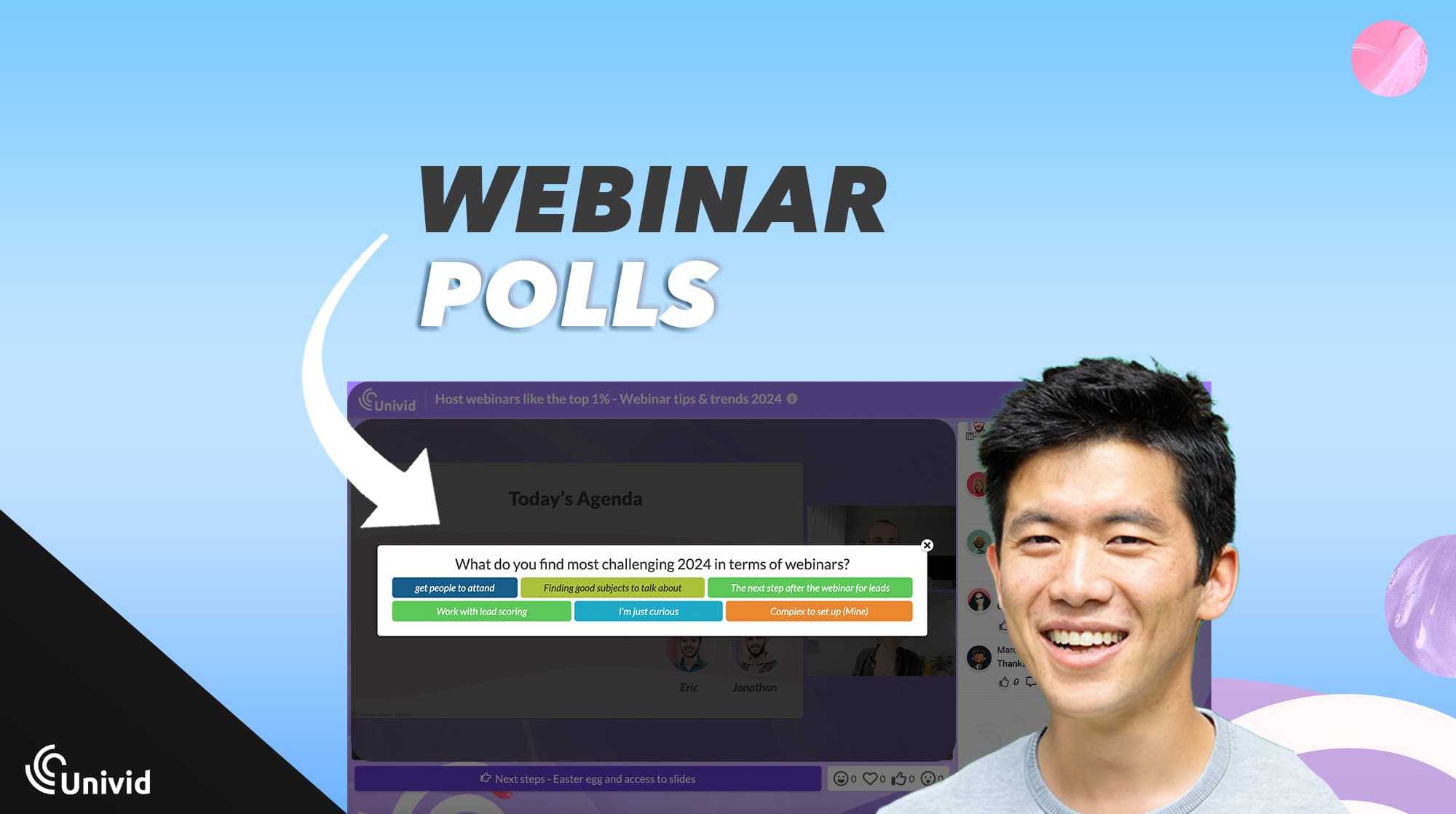
Innehåll
Introduktion
När du håller webbinarier är nyckeln till framgång - engagemang. Men hur får du till det?
Omröstningar är ett kraftfullt verktyg för att skapa interaktion – de erbjuder dig insikter om publikens åsikter i realtid, och skapar en öppen atmosfär där publiken plötsligt spelar en viktig roll i webbinariet.
Den här guiden utforskar hur du effektivt jobbar med omröstningar i dina webinars. Och hur du säkerställer en toppupplevelse för deltagarna och samlar värdefull data för dig som värd.
Vad är en omröstning i ett webbinarium?
En omröstning (eller så kallad live poll) innebär att du strukturerat kan ställa en fråga under webbinarier för att antingen aktivera deltagarna, förstå deras åsikter bättre, eller samla feedback i realtid.
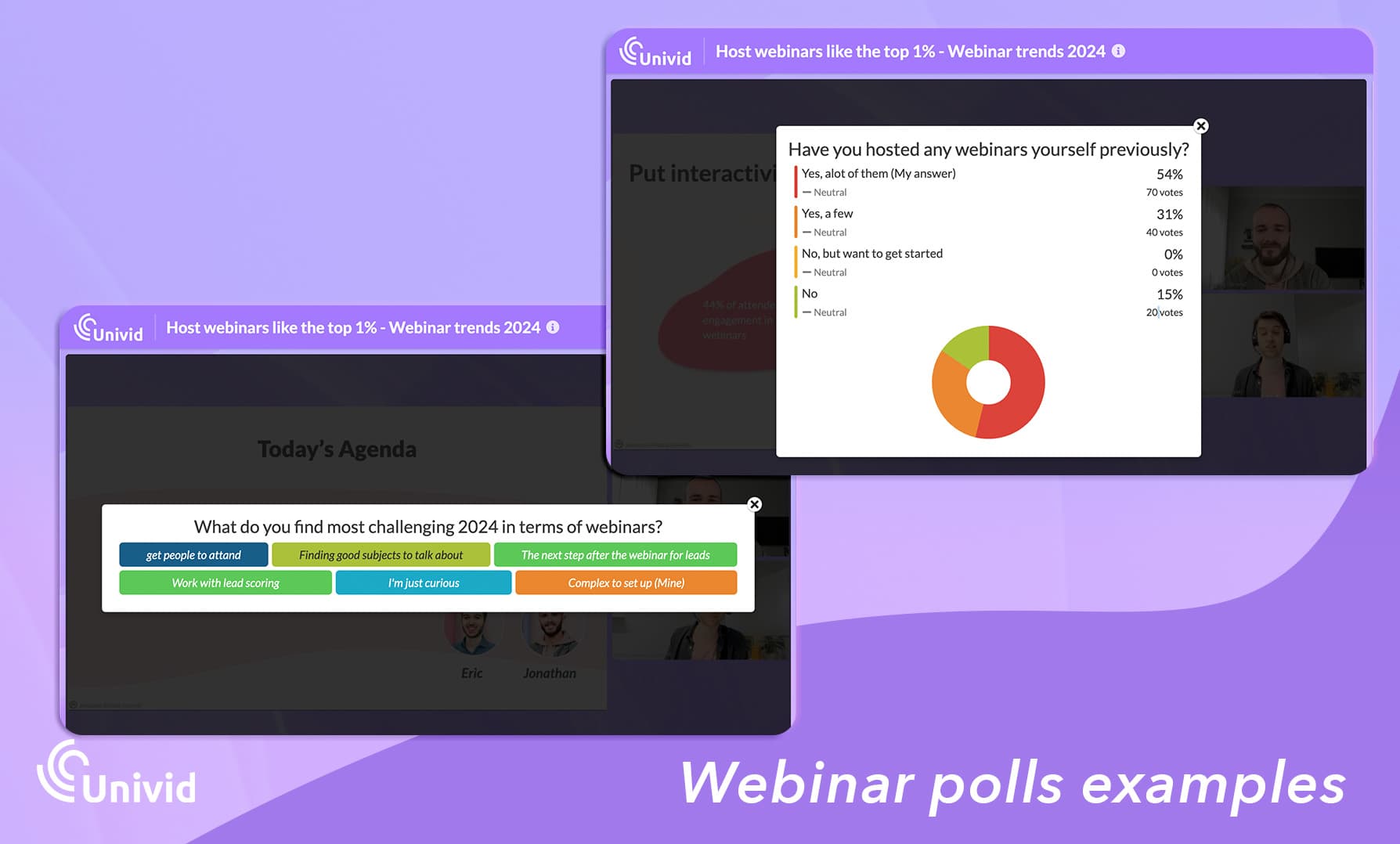
Why use polls in webinars?
Polls serve multiple purposes in webinars. Here are 4 of the key reasons to run polls:
Engagement: They break the monotony of a one-way communication, keeping the audience engaged and focused - make them feel part of the webinar!
Feedback: Polls give immediate feedback on whether the audience understands you and is interested.
Data Collection: Poll results offer insights that you can put into content and bring into product development.
Personalization: Tailor the content based on the poll responses. This way you make the webinar relevant to the attendees and keep things crispy.

Example of live poll in webinar
Hur man använder polls i webbinarier (3 steg)
Så här genomför du omröstningar som de bästa. I 3 steg - före, under och efter webbinariet.
1. Före webbinariet
Planeringsfasen. Låt oss planera omröstningarna.
Identifiera mål: Bestäm vad du vill uppnå med dina omröstningar (t.ex. mäta kunskap, samla in åsikter).
Designa frågor: Skapa tydliga, koncisa frågor som är relevanta för ditt ämne och din målgrupp.
För att få hjälp med bra frågor att ställa – prova vår generator för webinarpolls nedan. Den kan ge dig lite idéer om strukturen för bra omröstningar.

Generera pollsfrågor och omröstningar
Få förslag på engagerande pollsfrågor och omröstningar för ditt nästa webbinarium. Aktivera din webinarpublik och deltagare.
2. Under webbinariet
Exekveringsfasen. Nu kör vi. Låt oss aktivera omröstningarna.
Timing: Aktivera omröstningar på strategiska platser för att bibehålla intresset och samla in relevant information.
Förklaring: Förklara kortfattat syftet med varje omröstning och hur man deltar.
Interaktion: Uppmuntra deltagande genom att svara på omröstningsresultat i realtid.
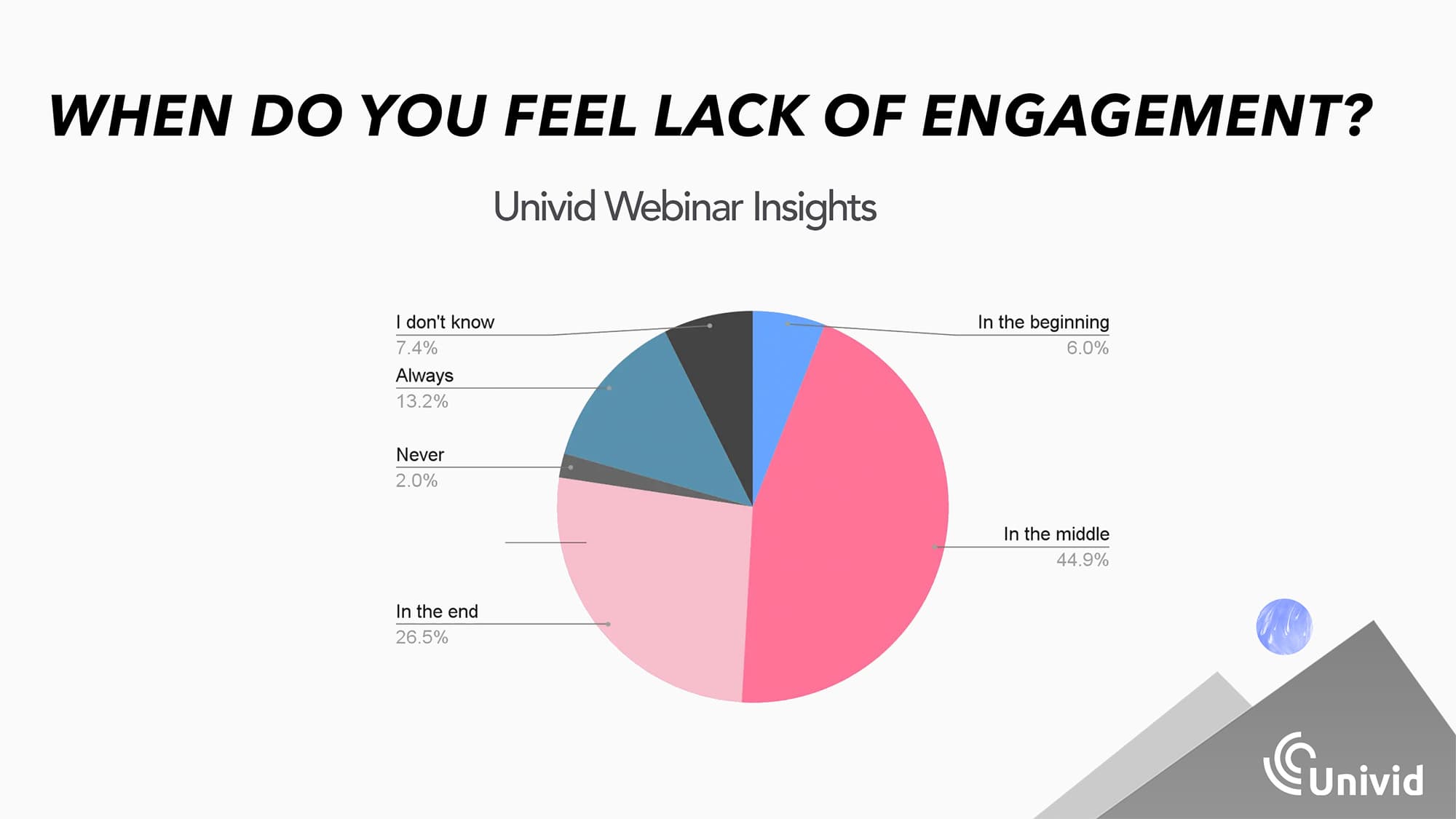
3. Efter webbinariet
Uppföljngningsfasen. Låt oss titta på hur omröstningarna landat.
Spana på resultaten: Analysera data för att förstå publikens preferenser och justera framtida strategier.
Dela insikterna: Använd resultaten från omröstningar i uppföljningskommunikation för att upprepa viktiga punkter från webbinariet och bygga relation med publiken.
Du kan titta på svaren i opinionsundersökningar på både (A) aggregerad nivå – hur svarade publiken som grupp? och (B) individuell nivå – hur svarade varje individ?
Att titta på individnivå kan visa dig vilka specifika leads du kanske vill följa upp lite mer med, och VARFÖR bakom de övergripande svaren.
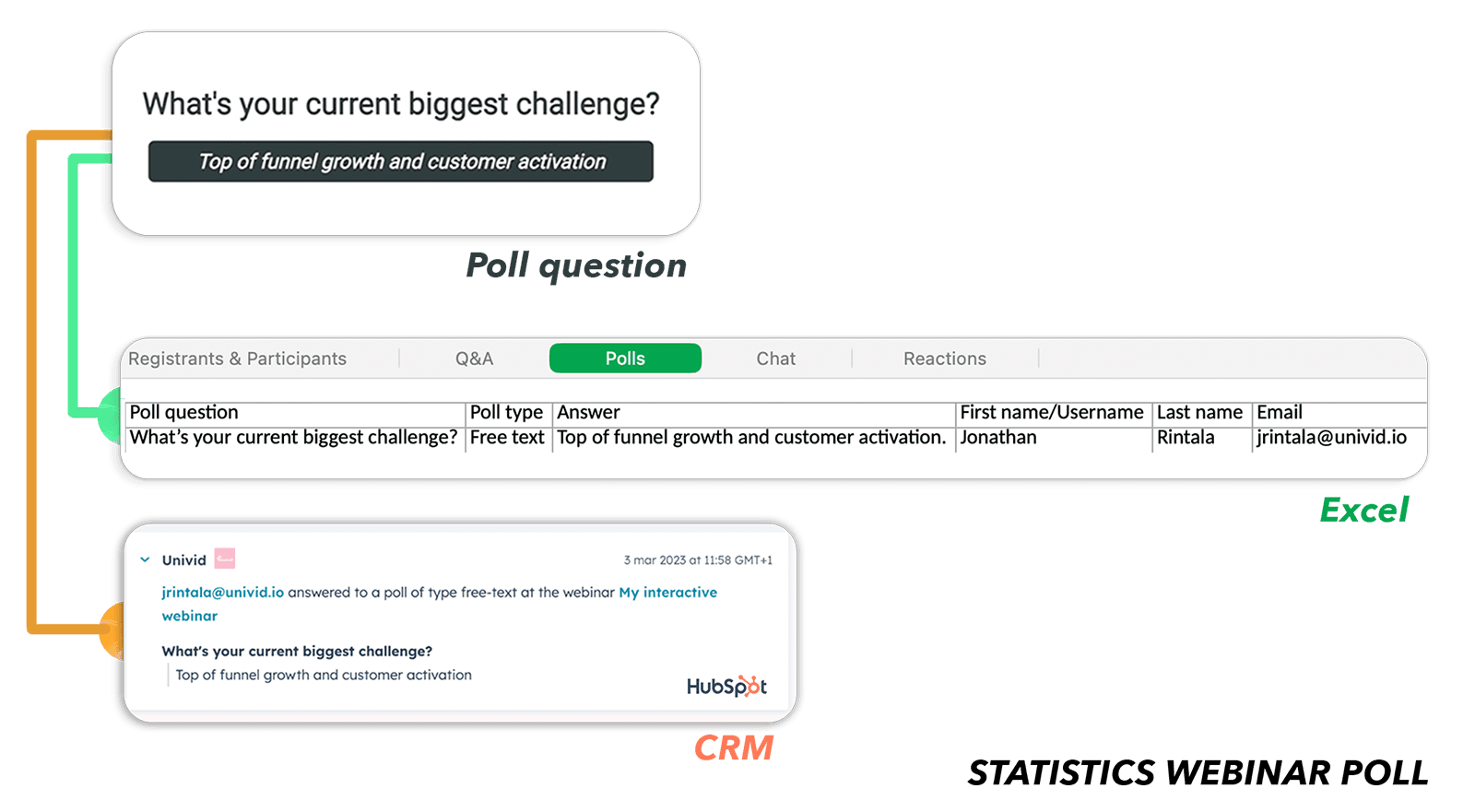
Fyra pelare för engagerande omröstningar
Relevans: Se till att varje fråga i omröstningen är direkt relaterad till webbinariets innehåll (och den deltagande publiken).
Enkelhet: Använd ett enkelt språk. Begränsa alternativen för att undvika att överbelasta deltagarna. Använd bara fritextalternativ där det behövs.
Mångfald: Blanda frågetyper (flervalsfrågor, fritext, betygsskalor) för att bibehålla intresset. Mer om typer av omröstningar nedan.
Timing: Var 15:e minut är vanligtvis ett bra mål att inkludera interaktion (när fokus sjunker). Detta kan vara att starta en omröstning. Sprid ut dina omröstningar för att hålla energin hög utan att avbryta flödet.
Två typer av omröstningar i Univid
Poll type 1: Flervals poll
Flervalsfrågorna i Univid har fördefinierade alternativ som du som värd skapar upp - och som deltagarna kan välja mellan. Värden kan alltid se resultaten - men kan välja att visa resultaten (anonymt) för deltagarna, eller hålla resultaten dolda endast för värden.
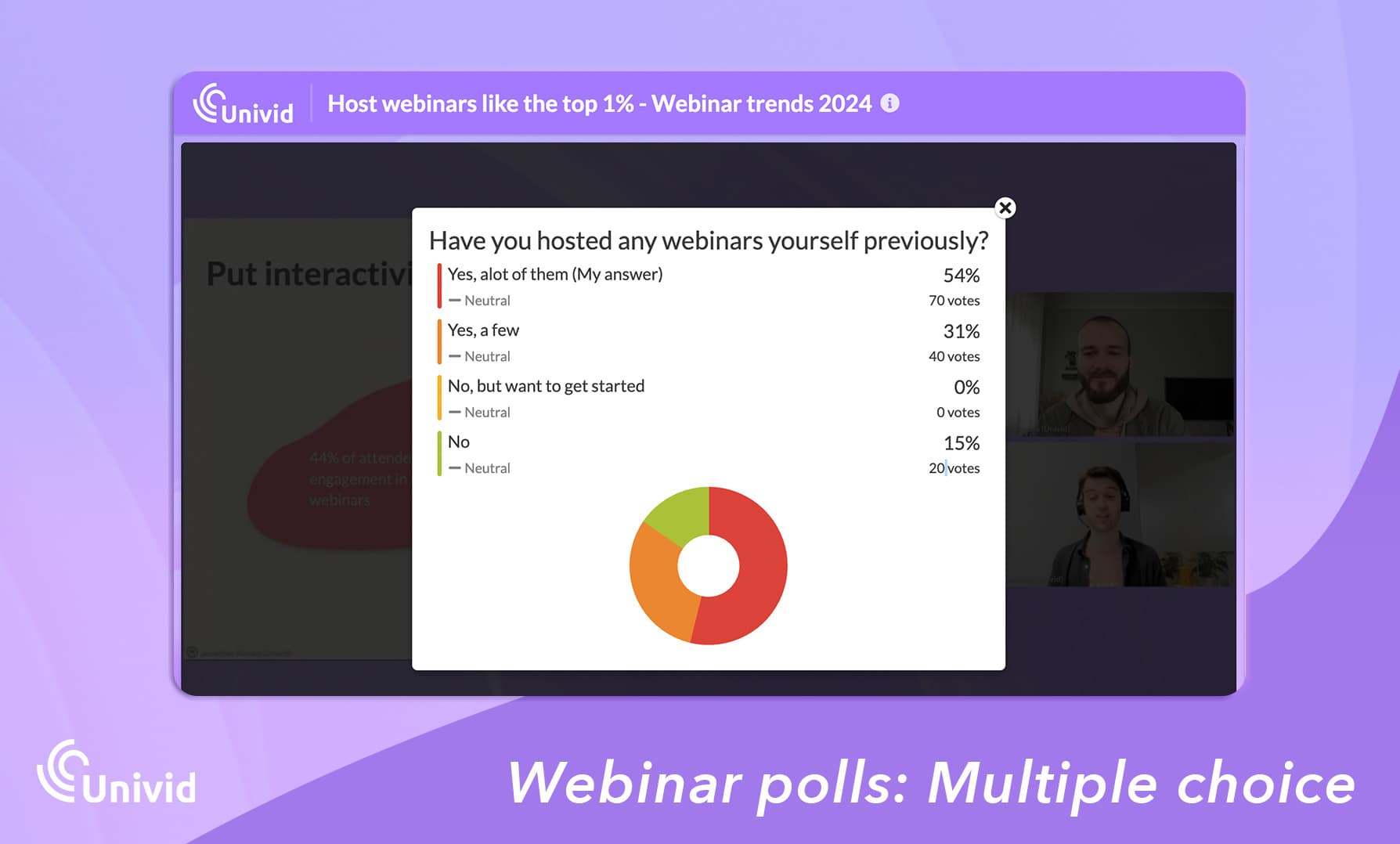
Exempel på en flervals-poll i Univid - med visade resultat
Poll type 2: Fritext-polls
Fritextomröstningarna i Univid låter deltagarna skriva in sina egna svar – perfekt för att samla in mer djupgående svar eller få lite variation. Du kan också välja att visa svaren för publiken, eller hålla dem dolda för att använda dem som ett feedbackverktyg.
Till exempel: Vilket ämne borde vi ha vårt nästa webbinarium om? Vad tyckte du om dagens webbinarium?
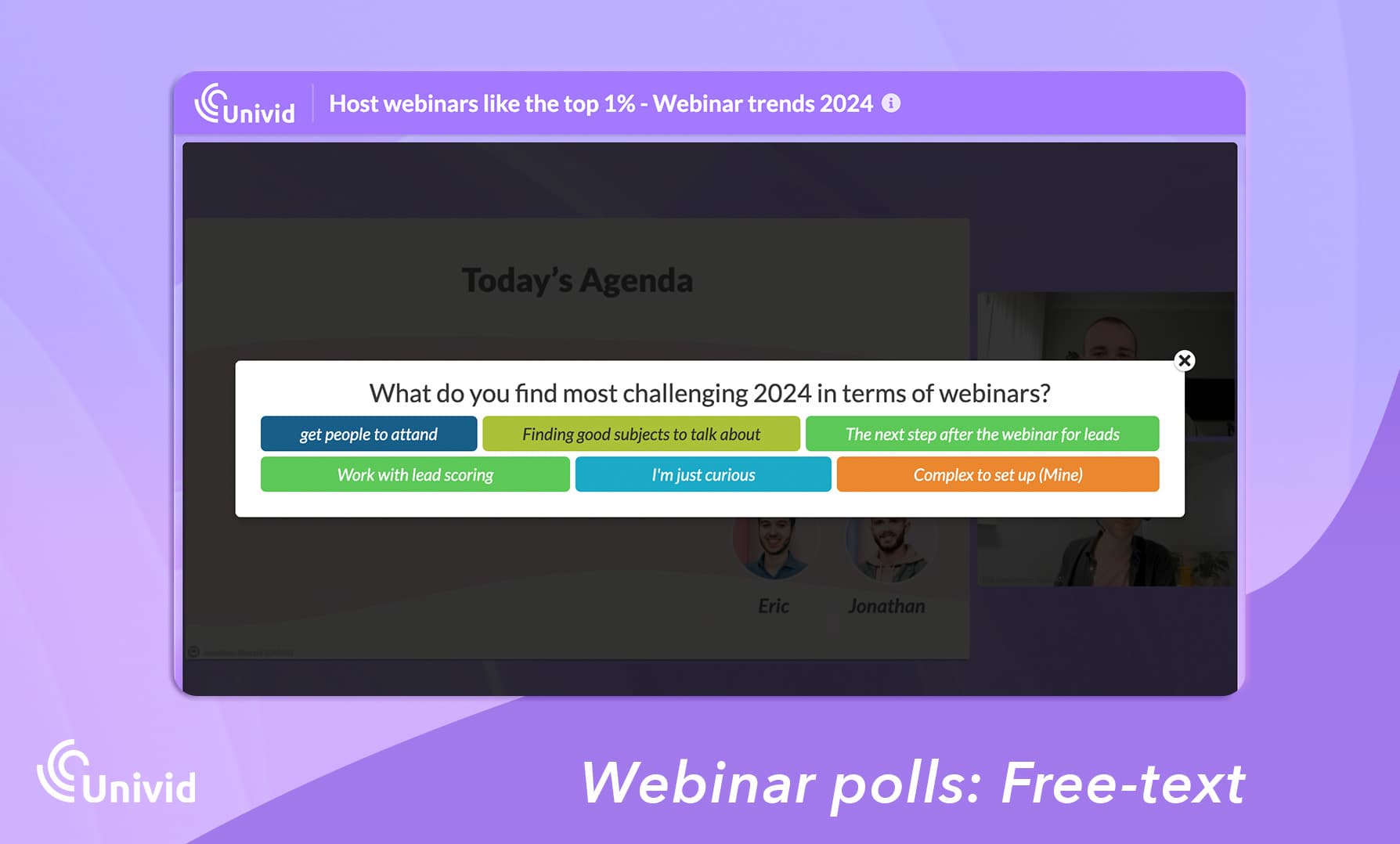
Exempel på en fritext-poll i Univid - med avslöjade svar
Prova på att skapa upp polls själv - genom att skapa ett gratis webbinarium nedan 👇
Sammanfattning
Omröstningar är en viktig del av framgångsrika webbseminarier och erbjuder ett sätt att skapa djupare engagemang och värdefulla insikter hos din målgrupp.
Genom att planera, genomföra och analysera omröstningar effektivt kan du förbättra webinarupplevelsen och driva meningsfulla resultat för ditt företag och din publik.
Vanliga frågor (FAQs)
Q: Vad är live-omröstningar i ett webbinarium?
Live-omröstningar (ofta kallade polls) är interaktiva frågor som värdar kan skicka ut under ett webbinarium för att få direktfeedback från deltagarna. Omröstningar är ett effektivt verktyg för att både öka engagemanget bland publiken och få feedback.
Q: Varför ska jag använda polls under webbinarier?
Att använda polls i webbinarier hjälper till att öka deltagarnas uppmärksamhet och involverar publiken - och anpassar även innehållet till publikens behov. Live-polls kan användas för att bryta isen, samla in insikter eller få feedback i realtid.
Q: Vilka webbinariumplattformar stöder polls?
Många webbinariumplattformar stödjer polls. Vissa behöver plugins från tredje part, medan andra som Univid har inbyggda polls. Det passar bra för interaktiva webbinarier, där interaktion är viktigt.
